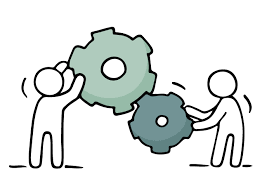Design Thinking: Fueling Entrepreneurial Innovation
In today's fiercely competitive business landscape, innovation isn't merely an advantage—it's the cornerstone of entrepreneurial success. It's not enough to conceive a groundbreaking idea; entrepreneurs must translate that vision into a tangible reality. Design thinking emerges as a powerful catalyst, propelling innovation in the entrepreneurial sphere. Let's explore this transformative approach and uncover its potential to revolutionize your ventures.
What is Design Thinking?
Design thinking is a human-centered problem-solving methodology. It prioritizes empathy, creativity, and collaboration. This approach involves deeply understanding your target audience's needs and aspirations, generating innovative solutions through brainstorming, and rigorously testing prototypes to ensure effectiveness. It's a cyclical process of understanding, ideation, prototyping, and refinement.
The Indispensable Role of Empathy
Empathy is paramount in design thinking. By stepping into your customers' shoes, you gain invaluable insights into their pain points and challenges. This understanding empowers you to craft products and services that precisely address their needs, delivering efficient and effective solutions.
Unleashing the Power of Creativity
Creativity forms the very core of design thinking. It encourages entrepreneurs to challenge conventional thinking, break free from limitations, and devise innovative solutions to complex problems. Embracing creativity allows you to stand apart from competitors, establishing a unique value proposition that resonates deeply with your target audience.
The Strength of Collaborative Problem-Solving
Design thinking champions collaboration. By involving stakeholders with diverse backgrounds and perspectives, you tap into a rich wellspring of ideas and expertise. This collaborative environment not only fosters innovation but also significantly increases the likelihood of identifying optimal solutions.
Iterative Prototyping and Testing: A Path to Refinement
Design thinking emphasizes early prototyping and user testing. This iterative approach allows entrepreneurs to gather valuable feedback, refine their designs, and ensure alignment with customer needs. This process minimizes the risk of failure and maximizes the chances of creating a successful product or service. Continuous iteration is key.
Case Study: Apple—A Design Thinking Triumph
Apple exemplifies the transformative power of design thinking. From the iconic iPhone to the user-friendly MacBooks, Apple consistently prioritizes creating products that seamlessly blend cutting-edge technology with elegant design. By meticulously understanding customer needs and desires, Apple has not only revolutionized the tech industry but also established itself as a global leader.
Case Study: Airbnb—Revolutionizing Hospitality
Airbnb's success story further underscores the effectiveness of design thinking. By recognizing the frustrations of both travelers and homeowners, Airbnb developed a platform that connects individuals seeking unique accommodations with those willing to rent their homes. This user-centric approach disrupted the traditional hospitality industry and propelled Airbnb to global prominence.
Design Thinking and Exceptional Customer Experience
In today's customer-centric world, providing outstanding customer experiences is paramount. Design thinking enables entrepreneurs to truly understand their customers' perspectives, creating products and services that not only meet but exceed expectations. This focus on customer experience fosters brand loyalty and provides a significant competitive advantage.
The Crucial Role of Prototyping
Prototyping is an integral component of design thinking. Whether it's a physical product or a digital service, prototypes provide a tangible representation of your ideas, facilitating valuable feedback collection. Testing and iterating on prototypes ensure you're on the right path before committing significant resources to full-scale production.
Design Thinking as a Problem-Solving Framework
Design thinking is fundamentally a problem-solving methodology. It empowers entrepreneurs to tackle complex challenges creatively and effectively, addressing root causes rather than merely treating symptoms. This proactive problem-solving mindset is vital for fostering sustainable growth and long-term success.
Case Study: Google—Innovation Driven by Design Thinking
Google's innovative products and services are a testament to the power of design thinking. From the intuitive Google Search interface to the user-friendly Google Maps, Google consistently prioritizes seamless user experiences. This commitment to design thinking has established Google as a synonym for innovation and has revolutionized numerous industries.
Design Thinking and Market Differentiation
In today's saturated marketplace, differentiation is crucial. Design thinking empowers entrepreneurs to create products and services that are not only functional but also aesthetically pleasing and emotionally resonant. By focusing on the holistic user experience, you can carve a unique niche and cultivate a loyal customer base.
Design Thinking: A Transformative Mindset
Design thinking is more than just a methodology; it's a mindset that fundamentally alters how entrepreneurs approach challenges and opportunities. By adopting a human-centered, iterative approach, entrepreneurs can continuously innovate, adapt to evolving market demands, and maintain a competitive edge.
The Future of Design Thinking
As technology continues to evolve, design thinking will play an even more critical role in entrepreneurship. With advancements in artificial intelligence, virtual reality, and other emerging technologies, entrepreneurs must embrace design thinking to develop innovative solutions that fully leverage these technological advancements.
Your Perspective on Design Thinking
What are your thoughts on the impact of design thinking? How do you envision it shaping the future of entrepreneurship? We encourage you to share your insights and experiences in the comments below.
```




